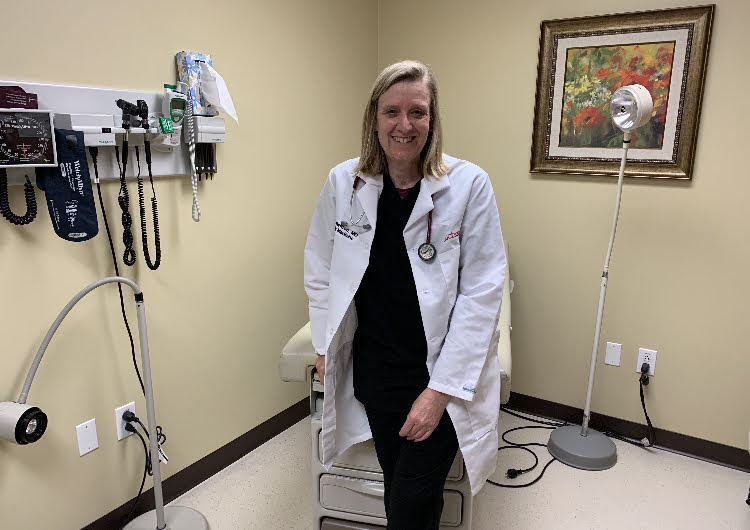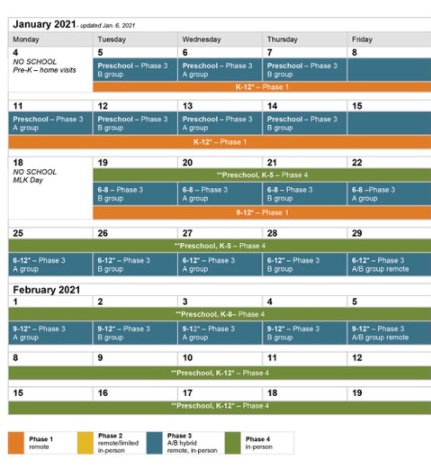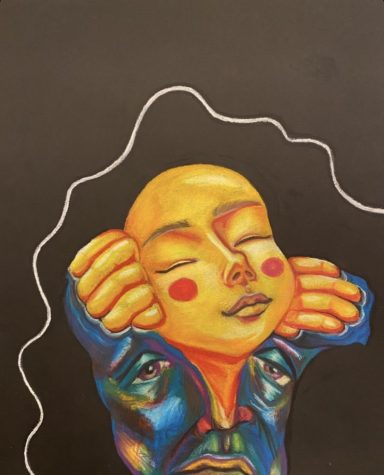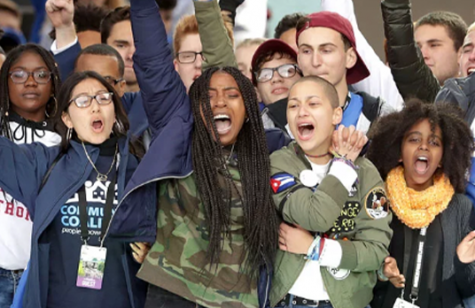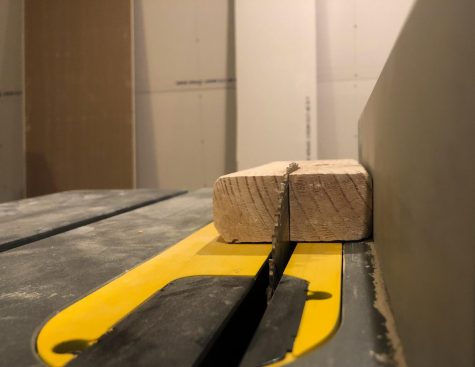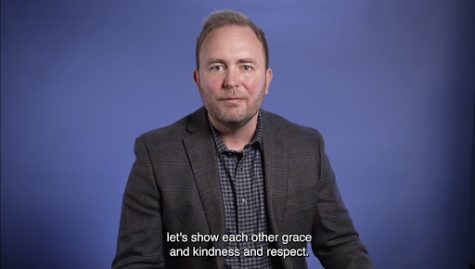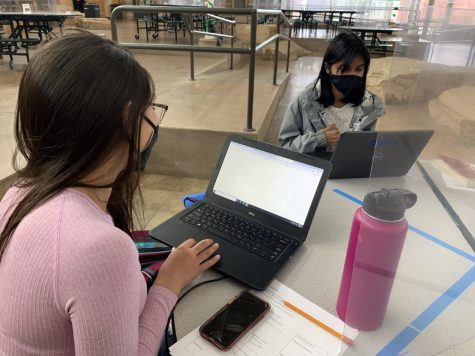On the front lines: “This is why we went into medicine”
Thank you to every health care worker, first responder, and essential services employee.
Dr. Albritton has worked in medicine for over twenty years, constantly working to improve patient’s quality of life.
Working at the UC Health clinic in Windsor, Dr. Eliz Albritton-McDonald has been contributing to the fight against COVID-19. She sees about three or more patients a day that get diagnosed with coronavirus, as well as other patients. In the past month, Albritton has learned that every day in medicine will be different, and she is dedicated to helping people in whatever way she can.
During a week, Albritton spends only three days at her clinic. While there, she takes patients in person as well as virtual appointments. In addition to those days, she spends two days at home doing virtual appointments. Albritton enjoys the appointments while she is at home, because her patients like to show their pets and Albritton gets to show them her dogs as well.
The number of doctors in the UC Health clinic are limited each day because the doctors are low on what they call “personal protective equipment.” This equipment is used every time a patient comes in who might be infected. For Albritton, this means wearing a mask, gloves, and fully gowning up.
Seventy percent of visits are now virtual on platforms such as Zoom. Albritton takes time to make sure every person has a way to connect, as those with knowledge of and access to technology vary. For her older patients, she adapts to using other video methods, or even phone calls. Albritton is learning to figure things out each day and improvise. “I want my patients to know that I’m very accessible. They can reach me. They don’t have to be out there on their own,” says Albritton. She is amazed how her practice is completely different than even a month ago because “that’s never happened before in medicine.”
COVID-19 patients are not the only ones that come in to see a doctor, although the other visits are very few. For example, people who have had a heart attack cannot simply wait it out until quarantine is over. Albritton describes those who still come into the clinic as patients with “regular acute medical stuff to be treated.” Babies under two years old still need crucial vaccinations, so they are still brought in to get immunized. However, all regular physicals have been placed on hold.
If someone has symptoms of COVID-19, they are first instructed to have a phone call or virtual visit. From there, Albritton diagnoses them based on their symptoms. The reason there is a lack of actual coronavirus tests is because the medical swab needed is in low supply and high demand. The United States relies on other countries to export it, but they currently need to deal with their own concerns as well. Therefore, many patients are diagnosed based on their symptoms, which are very identifiable.
If someone begins to have any sort of respiratory problems, they need to come in to get their oxygen levels checked. Albritton says that the oxygen level “is what tells you if you’re in trouble; tells you if your lungs are in trouble.” If that level is still above 90%, the body is still fighting the virus on its own. Additionally, Albritton listens to a patient’s lungs and sometimes needs a chest x-ray to see if the problem is actually COVID-19 or a bacterial pneumonia.
Bacterial pneumonia is an infection in the lungs, and it is treated with antibiotics. Some people get both the virus and the pneumonia because the body is busy fighting the virus, and it cannot treat the bacterial infection at the same time.
There is no current medication or treatment that will get rid of the virus. If an individual is not hospitalized, they can help combat what is affecting them most through what is called “symptomatic treatment.” People can cough so hard that they can break ribs, so that can be a symptom that needs extra help. If someone’s cough is the main issue, there are medications that help dilate the airway to give someone an easier way to breathe and less cough. There are things that help with fevers and other symptoms, but nothing can cure this virus. The body has to work through it on its own.
If someone does have to be hospitalized for COVID-19, they are screened right away. The hospital tests someone to definitively say if they have coronavirus or not. Patients may need a nasal cannula to provide respiratory assistance to open up the airway. Respirators are used as a last resort. They are used when the lungs or muscles get too tired to work on their own.
The reason why hospitals in the United States have not filled up compared to other countries is because they have completely shifted different areas of the hospital for possible intensive care units. Wards that are not being used during this time are converted. If the hospital were to gain a dramatic increase in patients, Albritton will be transferred to work at a hospital. She is currently on call, meaning she has given available shift times and will come in if she is needed. Albritton would be working with patients that come into the emergency room, since she has experience working in that area, that way other hospital staff can shift to focusing on the ICU patients.
Many believe that they do not feel concerned about COVID-19 because so far, studies show that it affects elderly people and those with preexisting conditions are most at risk. However, Albritton has found this not to be the case. She has learned that factors like smoking, obesity, and socio economic situations are also factors. In her patient population, Albritton has seen healthy middle aged people in their 30s and 40s who have gotten infected as well. Anyone of any age group and any status could be infected, so everyone must use caution.
Through all of this, Albritton says that it has been amazing. Her clinic sees this experience as “this is why we went into medicine.” As a clinic in Windsor, they know they are helping people every day, but this is “something extraordinary.” As a staff, they have done everything to help patients in so many new and different ways. Everyday is different and has to be approached with a new perspective. Despite all the uncertainty and chaos, staff at Albritton’s clinic have been able to set it all aside and focus completely on helping people. She says everyone is stressed, but they are managing it well.
People in the community have come by to drop off food and supplies to the clinic and thank the staff, which Albritton appreciates greatly. “It’s fun that we know people are thinking about us too,” she reflects. People have been “howling” outside at 8 p.m. every day to thank and support health care workers, which Albritton’s staff loves. One time, the fire department came by the clinic and flipped on all their sirens for the clinic, which was her favorite thing that has happened. “There’s so much amazing community support for the health care workers, and I just think that’s the coolest thing ever.”
Albritton has taken time to reflect during quarantine on what truly makes her happy. “I was struck by last weekend when I was like, I’m really homesick. And I’m sitting at home.” She misses being able to connect with people that she has strong relationships with in person. She said, “I don’t miss going anywhere. I just miss my people.”
As far as the future goes, Albritton says the virus is going to be here for a long time. The virus is very contagious without people even realizing it. She is interested to see what scientists find and want people to do in the next few months. There is also a question of how society will get going again. Albritton believes “we’re going to learn a new way of interacting as humans. I think it’s going to be profound.”
Your donation will support the student journalists of Fossil Ridge High School. Your contribution will allow us to purchase equipment and cover our annual website hosting costs.
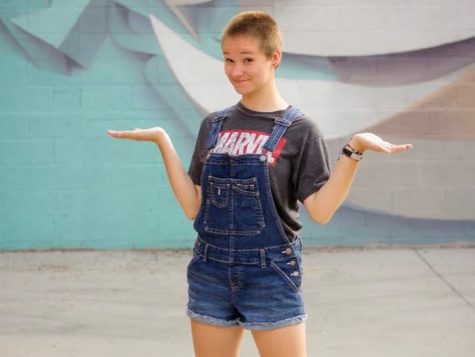
Co-Editor in Chief and senior Anna Henning is ecstatic to be entering her fourth year of journalism. Henning has grown up loving writing, and has taken every writing class she can. She really enjoyed taking Creative Writing freshman year, but Journalism II has always been her favorite class. Henning...



